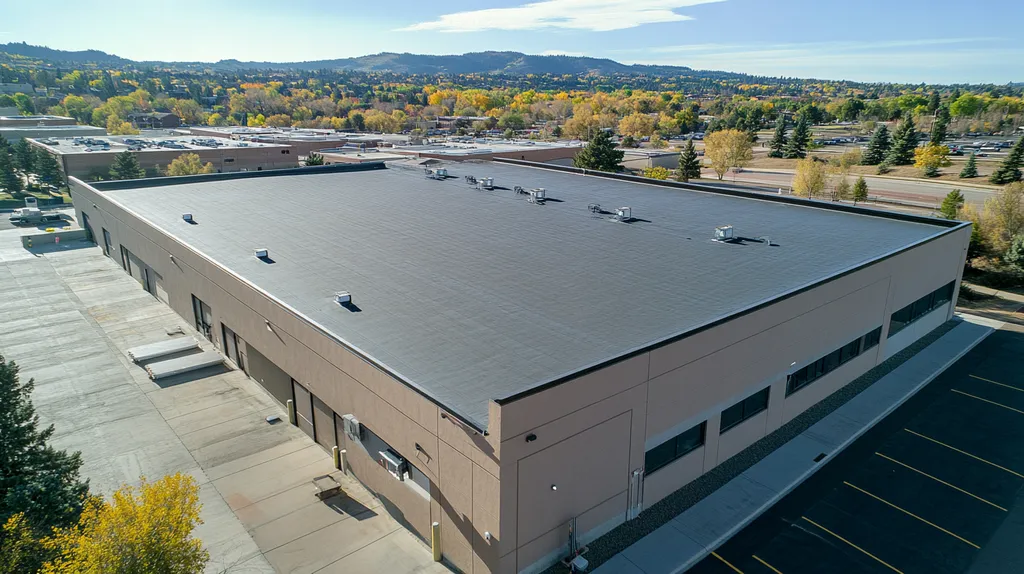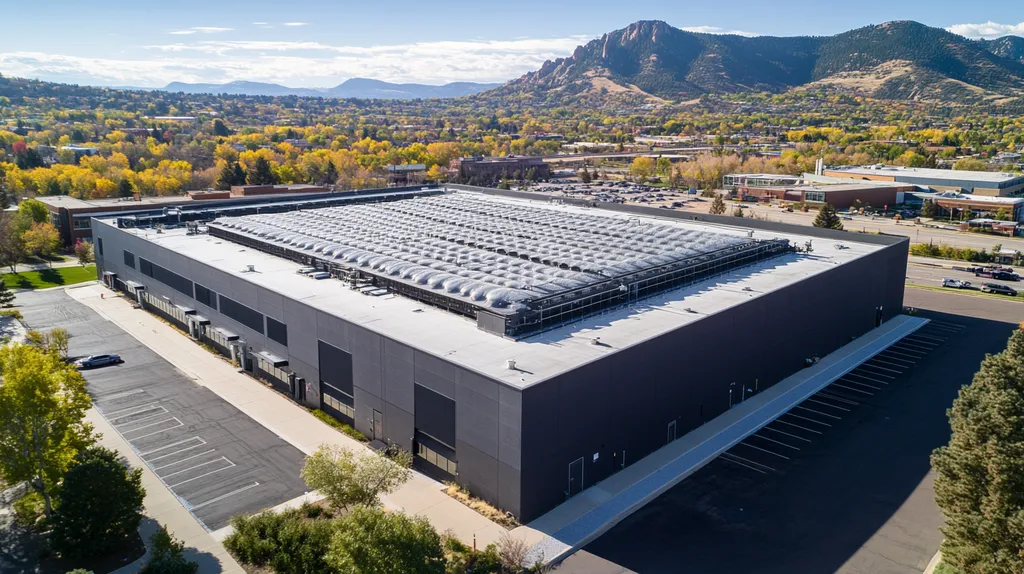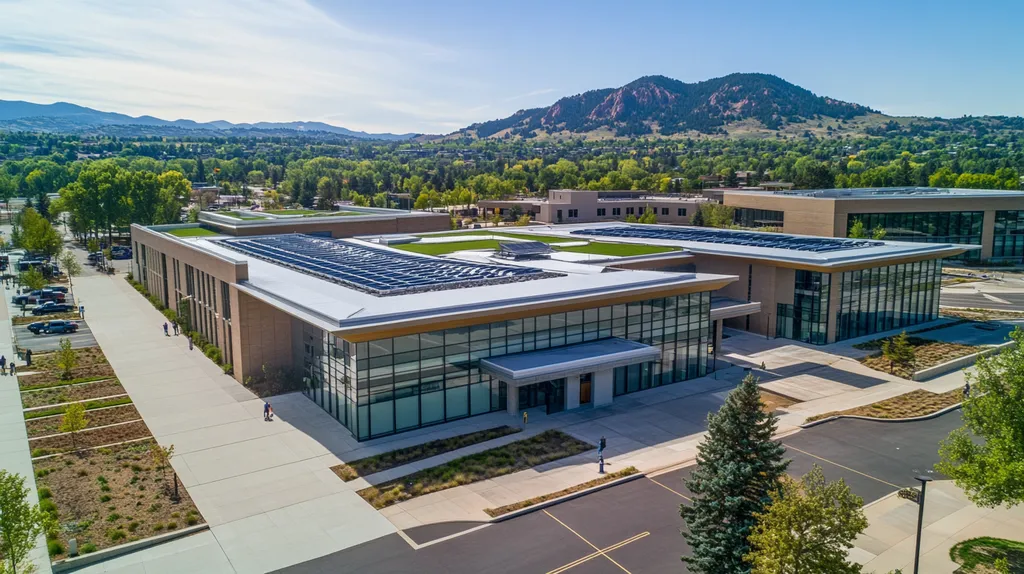Welcome to today’s Battle Royale featuring two roofing heavyweights: “Single-Ply Membrane” in the east corner versus “Built-Up Roofing” in the west!
Tonight’s showdown pits these contenders against each other across six punishing rounds designed to test every aspect of their performance for Industrial Roof Repairs.
At stake? Millions in potential costs, decades of building protection, and the critical performance demands of modern commercial and industrial facilities.
Our professional judging panel will evaluate each round on technical merit, real-world performance, and value delivery. After all six rounds, we’ll declare our ultimate champion.
Ladies and gentlemen, facility managers and building owners… it’s time to rumble!
ROUND 1: INITIAL COSTS & INSTALLATION
When industrial facilities face roofing decisions, the financial implications stretch far beyond initial price tags. A single misstep in material selection or installation approach can cascade into operational disruptions costing thousands per day. Understanding the true cost dynamics between single-ply membranes and built-up roofing systems requires examining not just materials, but the entire installation process and its impact on business continuity.
Material Expenses
The material cost difference between single-ply and built-up systems directly impacts project budgets and long-term facility planning. Single-ply membranes typically cost 15-25% less in raw materials compared to multi-layer built-up systems.
Single-ply membranes offer significant advantages in material handling and transportation costs. Their lightweight nature reduces structural load requirements and often eliminates the need for additional support reinforcement.
Built-up roofing systems require multiple material components including felt layers, bitumen, and aggregate surfacing. While these materials create a robust system, they drive up both material costs and logistics expenses.
For initial material expenses, single-ply membranes hold a clear ADVANTAGE.
Installation Complexity
Retrofitting options significantly influence installation complexity and building operations. Single-ply systems can often be installed over existing roofs without complete tear-offs, maintaining building operations during installation. (source: SFS USA)
Single-ply installations typically require smaller crews and fewer specialized tools. This reduced complexity translates to fewer potential points of failure during installation and easier quality control oversight.
Built-up roofing demands more complex installation procedures with multiple passes for each layer. The process requires specialized equipment, perfect weather conditions, and highly trained crews working in coordinated sequences.
The straightforward nature of single-ply installation earns it an ADVANTAGE in this category.
Project Timeline
Timeline considerations dramatically impact facility operations and bottom-line costs. Single-ply installations typically complete in half the time of built-up systems, with many projects finishing within 5-7 working days for standard industrial spaces.
Single-ply systems allow for rapid deployment and immediate weather protection. Once installed, these systems require minimal curing time before achieving full functionality.
Built-up roofing installations commonly span 10-14 days minimum, with weather delays potentially extending timelines further. Each layer requires proper curing time, and the sequential nature of installation prevents acceleration of the process.
The efficiency of single-ply installation provides another clear ADVANTAGE.
ROUND 1 WINNER: Single-Ply Membrane
ROUND 2: DURABILITY & LIFESPAN
When industrial roofing systems fail, the consequences ripple through entire operations. A single leak can shut down production lines, damage inventory, and compromise worker safety. Understanding how different roofing systems perform over time isn’t just about maintenance schedules – it’s about protecting millions in assets and preventing catastrophic business interruptions.
Weather Resistance
Extreme weather events pose increasing challenges for industrial roofing systems. Temperature fluctuations, UV exposure, and severe storms can accelerate deterioration and create vulnerabilities that disrupt operations.
Single-ply membranes excel in flexibility, expanding and contracting with temperature changes without compromising their integrity. Their seamless nature and UV-resistant formulation provide consistent protection against the elements.
Built-up roofing systems offer excellent protection through multiple layers but can become brittle over time. While their mass provides superior protection against hail and debris, this same characteristic makes them more susceptible to thermal shock damage.
For weather resistance, both systems perform admirably, resulting in a TIE.
Impact Resistance
Industrial roofs face constant challenges from maintenance traffic, equipment installations, and falling debris. The ability to withstand impacts without compromising waterproofing is crucial for maintaining continuous operations.
Single-ply membranes provide good puncture resistance but can be vulnerable to sharp objects. Their lightweight nature means impacts may transmit force directly to the substrate, potentially causing damage.
Built-up roofing systems excel at absorbing and dispersing impact forces through their multiple layers. Their robust construction provides superior protection against heavy maintenance traffic and dropped tools.
Built-up roofing earns a clear ADVANTAGE in impact resistance.
Repair Accessibility
When damage occurs, the speed and ease of repairs directly impact facility downtime. The accessibility of roofing systems for inspection and maintenance can mean the difference between minor fixes and major disruptions.
Single-ply membranes offer straightforward repair solutions that can often be completed in hours. Their uniform surface makes damage easy to spot and fix, minimizing the time facilities must operate under compromised conditions. Commercial flat roof systems like single-ply membranes are easier and safer to traverse, making smaller repairs less of a hassle. (source: SFS USA)
Built-up roofing repairs typically require more extensive work to access and fix damaged layers. The complexity of these repairs often extends facility disruption and increases the risk of additional damage during the repair process.
Single-ply membranes claim an ADVANTAGE in repair accessibility.
ROUND 2 WINNER: Single-Ply Membrane
ROUND 3: PERFORMANCE FACTORS
Every industrial facility faces critical decisions about roofing performance that directly impact operational continuity. A single performance failure can result in production shutdowns costing tens of thousands per day, damaged inventory, and compromised worker safety. Understanding how different roofing systems perform under real-world conditions is essential for protecting both assets and operations.
Environmental Adaptability
Industrial roofs must withstand extreme temperature fluctuations, chemical exposure, and constant vibration from equipment. These environmental stressors can accelerate deterioration and create vulnerabilities that threaten operations.
Single-ply membranes demonstrate superior flexibility, allowing them to expand and contract without compromising structural integrity. Their chemical-resistant formulations provide consistent protection against industrial emissions and pollutants.
Built-up roofing systems offer good initial resistance but can become brittle over time when exposed to harsh industrial environments. Their multiple layers provide some chemical protection but are more susceptible to fatigue from constant vibration.
For environmental adaptability, Single-ply membrane claims an ADVANTAGE.
Operational Impact
The ability to maintain normal operations during maintenance and repairs directly affects facility productivity. Minimizing disruptions during roofing work can mean the difference between meeting production targets and costly shutdowns.
Single-ply systems allow for sectional repairs that can often be completed without impacting facility operations. Their lightweight nature enables faster maintenance response times and reduces the need for extensive equipment mobilization.
Built-up roofing repairs typically require larger work areas and more extensive setup, often forcing partial facility shutdowns. The complexity of multi-layer repairs extends disruption times and increases the risk of operational impacts.
For operational impact, Single-ply membrane earns another ADVANTAGE.
Long-term Value
Industrial roofing systems must deliver reliable performance throughout their lifecycle while minimizing total ownership costs. The true value of a roofing system extends far beyond initial installation expenses.
Single-ply membranes offer predictable maintenance costs and simple repair protocols that help control long-term expenses. Their energy-efficient properties can significantly reduce cooling costs in industrial facilities.
Built-up roofing systems often incur higher maintenance costs due to their complex structure and repair requirements. While durable, their higher thermal absorption properties can increase energy consumption and HVAC loads.
In long-term value assessment, Single-ply membrane secures an ADVANTAGE.
ROUND 3 WINNER: Single-Ply Membrane
ROUND 4: MAINTENANCE REQUIREMENTS
In industrial settings, roof maintenance isn’t just about preventing leaks – it’s about protecting millions in equipment, inventory, and operational capacity. Every hour of production lost to roofing issues can cost facilities tens of thousands in revenue. Studies show that over 85% of catastrophic roof failures could have been prevented through proper maintenance protocols.
Inspection Requirements
The frequency and complexity of required inspections directly impact facility operations and maintenance budgets. Understanding these requirements helps facilities plan for minimal disruption while ensuring roof integrity.
Single-ply membranes feature straightforward inspection protocols that can be performed quickly and efficiently. Their uniform surface makes issues easy to spot during routine walkdowns, allowing for early intervention before problems escalate.
Built-up roofing demands more intensive inspection procedures to examine multiple layers and components. The complexity of these systems often requires specialized expertise and equipment, increasing both cost and inspection time.
For inspection requirements, Single-ply membrane claims an ADVANTAGE.
Repair Procedures
Commercial flat roof systems require different approaches to repairs, with some methods being significantly more disruptive than others. Quick access and simple repair protocols can mean the difference between minor interruptions and extended shutdowns.
Single-ply membrane repairs typically involve straightforward procedures that can be completed in hours rather than days. Their uniform construction allows for targeted repairs without disturbing surrounding areas.
Built-up roofing repairs often require extensive work to access and fix damaged layers. The sequential nature of these systems means even minor repairs can become major projects.
In repair procedures, Single-ply membrane earns another ADVANTAGE.
Long-term Care
The ongoing maintenance burden of roofing systems significantly impacts facility operations and maintenance budgets. Understanding these requirements helps organizations plan for sustainable long-term performance.
Single-ply membranes maintain their performance with minimal intervention beyond regular cleaning and inspection. Their resistance to environmental degradation reduces the need for frequent maintenance interventions.
Built-up roofing requires regular reapplication of protective coatings and replacement of surface materials. The complexity of these systems often leads to higher long-term maintenance costs and more frequent major interventions.
For long-term care requirements, Single-ply membrane secures an ADVANTAGE.
ROUND 4 WINNER: Single-Ply Membrane
ROUND 5: SUSTAINABILITY CREDENTIALS
Environmental impact has become a critical factor in industrial roofing decisions, with facilities facing increasing pressure to reduce their carbon footprint while maintaining operational efficiency. The roofing industry generates over 8 million tons of waste annually, making sustainable choices more crucial than ever for facility managers and building owners.
Today’s industrial facilities must balance environmental responsibility with performance requirements, as sustainable roofing choices directly impact both operational costs and corporate environmental goals. Understanding the sustainability credentials of different roofing systems has become essential for making informed long-term decisions.
Materials and Environmental Impact
The environmental footprint of roofing materials extends far beyond their installation. Single-ply membranes are manufactured using processes that require significantly less energy than traditional materials, and many incorporate recycled content into their production.
These membranes typically weigh 75% less than built-up systems, reducing transportation emissions and structural load requirements. Their lightweight nature also means less material waste during installation and replacement.
Built-up roofing systems involve multiple layers of materials, including petroleum-based products that carry a higher environmental impact. While some components can be sourced sustainably, the overall material footprint remains larger than single-ply alternatives.
For environmental impact, Single-ply membrane claims an ADVANTAGE.
Energy Performance
Roofing systems play a crucial role in facility energy efficiency, particularly in industrial settings where climate control costs can represent up to 30% of energy expenses. Single-ply membranes often feature reflective surfaces that significantly reduce heat absorption and cooling loads.
Modern single-ply systems can reflect up to 85% of solar radiation, leading to substantial reductions in cooling costs. Their seamless installation also eliminates thermal bridges that can compromise energy efficiency.
Built-up roofing typically absorbs more solar heat, though modern cool-roof coatings can improve performance. However, these coatings require regular maintenance and reapplication to maintain their effectiveness.
In energy performance, Single-ply membrane secures another ADVANTAGE.
End-of-Life Management
The ability to recycle or repurpose roofing materials at the end of their service life has become increasingly important for environmental compliance and corporate sustainability goals. Single-ply membranes can often be fully recycled into new roofing products or other materials.
These systems can typically be removed in large sections, simplifying the recycling process and reducing labor costs. Many manufacturers now offer take-back programs that ensure proper recycling of old materials.
Built-up roofing presents significant challenges for recycling due to its mixed material composition. The layered construction makes separation difficult, often resulting in materials being sent to landfills.
For end-of-life management, Single-ply membrane earns an ADVANTAGE.
ROUND 5 WINNER: Single-Ply Membrane
ROUND 6: SPECIALIZED APPLICATIONS
Industrial facilities with specialized operations face unique roofing challenges that can make or break production efficiency. Chemical processing plants, food manufacturing facilities, and data centers each require specific roofing solutions that protect sensitive operations while minimizing disruption during installation or repairs. A mismatch between roofing system and specialized needs can result in production losses exceeding $50,000 per hour.
Application Versatility
Specialized industrial facilities often require roofing systems that can accommodate unique penetrations, support specialized equipment, and adapt to facility modifications. The ability to integrate with facility-specific requirements while maintaining waterproof integrity directly impacts operational continuity.
Single-ply membranes offer superior flexibility in accommodating various penetrations and equipment mounts. Their thermoplastic or elastomeric composition allows for easy modification and seamless integration with specialized equipment installations.
Built-up roofing systems present challenges when accommodating frequent modifications or specialized equipment installations. Their multi-layer construction makes alterations more complex and time-consuming, potentially extending facility disruptions.
For application versatility, Single-ply membrane claims an ADVANTAGE.
Chemical Resistance
Industrial environments often expose roofing systems to harsh chemicals, emissions, and process byproducts. The ability to maintain integrity under these conditions directly affects facility protection and operational continuity.
Single-ply membranes can be engineered with specific chemical resistance properties to match facility requirements. Their uniform composition provides consistent protection against identified chemical exposures without degradation.
Built-up roofing systems may experience accelerated deterioration when exposed to industrial chemicals. Their organic components can break down under sustained chemical exposure, leading to more frequent repair needs.
In chemical resistance, Single-ply membrane earns an ADVANTAGE.
Equipment Integration
Modern industrial facilities require roofing systems that can safely integrate with rooftop equipment while maintaining system integrity. Retrofitting options significantly influence installation complexity and building operations. Single-ply systems allow for easier equipment integration without compromising the roofing system’s integrity. (source: SFS USA)
Single-ply membranes provide straightforward solutions for equipment mounting and modification. Their flexible nature allows for simple flashing and sealing around new installations without compromising the entire system.
Built-up roofing requires more complex modifications for equipment integration. The multi-layer structure makes it difficult to maintain system integrity when adding or modifying equipment mounts.
For equipment integration, Single-ply membrane secures an ADVANTAGE.
ROUND 6 WINNER: Single-Ply Membrane
AND THE WINNER IS…
After six grueling rounds of technical evaluation, we have our verdict…
In a stunning showcase of modern roofing superiority, SINGLE-PLY MEMBRANE has emerged as our undisputed champion, winning all six rounds with a combination of technical excellence and operational efficiency!
This roofing powerhouse dominated the competition with faster installation times, superior environmental adaptability, and lower maintenance requirements. Its knockout performance in sustainability and specialized applications sealed its championship status.
But don’t count Built-Up Roofing out entirely, folks! This veteran contender still packs a powerful punch when maximum impact resistance is required or in facilities facing extreme debris exposure. Its multi-layer defense system remains unmatched in these specific arenas.
Remember, champions: Every building brings its own unique challenges to the ring. Local climate conditions, structural requirements, and facility-specific demands all play crucial roles in determining the ideal roofing system. While this analysis provides strategic insights, property owners should always consult with qualified roofing professionals who can evaluate their specific situation.
In the high-stakes world of industrial roofing, there’s no such thing as a one-size-fits-all champion. The true victory comes from matching your facility’s specific requirements with the right contender’s strengths. Now, let’s get ready for the next round of roofing excellence!
FREQUENTLY ASKED QUESTIONS
Q. What are the initial costs of commercial roof options?
A. Initial costs vary significantly between single-ply membranes and built-up roofing systems. Single-ply membranes generally have lower material costs and easier installation, reducing overall expenses for your commercial roofing project.
Q. How does durability impact industrial roof options?
A. Durability plays a crucial role in industrial roofing systems. Single-ply membranes provide flexibility and weather resistance, while built-up systems excel in impact resilience, affecting their long-term performance and maintenance needs.
Q. What are the performance factors for commercial roofs?
A. Performance factors include environmental adaptability and operational impact during maintenance. Single-ply membranes typically allow quicker repairs with less disruption, ensuring continuous operations and minimizing financial losses for industrial facilities.
Q. How important are maintenance requirements for industrial roofing?
A. Maintenance is essential to protect your investment in industrial roofing. Single-ply membranes feature easier inspection and repair procedures, reducing facility disruptions compared to built-up roofing systems, which demand more intensive maintenance efforts.
Q. What are the sustainability credentials for commercial roof systems?
A. Sustainability credentials include the materials used, energy performance, and end-of-life management. Single-ply membranes often utilize recycled materials and have reflective surfaces that enhance energy efficiency, making them an environmentally friendly choice.
Q. How do specialized applications affect industrial roofing choices?
A. Specialized applications require roofing systems that can handle unique challenges. Single-ply membranes offer flexibility for equipment integration and chemical resistance, making them suitable for diverse industrial environments compared to built-up roofing.
Q. What advantages do single-ply membranes offer over built-up roofing?
A. Single-ply membranes provide lower initial costs, easier installation, and faster repairs. They also offer better energy efficiency, lower maintenance requirements, and increased versatility for specialized applications compared to built-up roofing systems.











